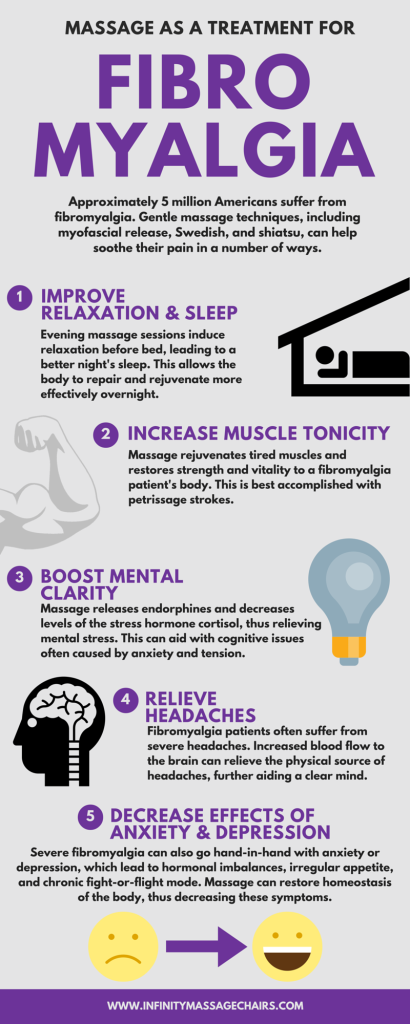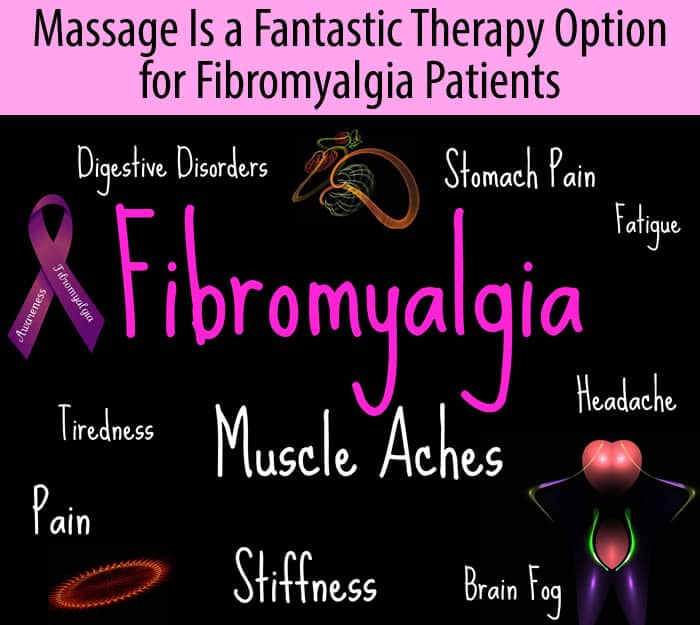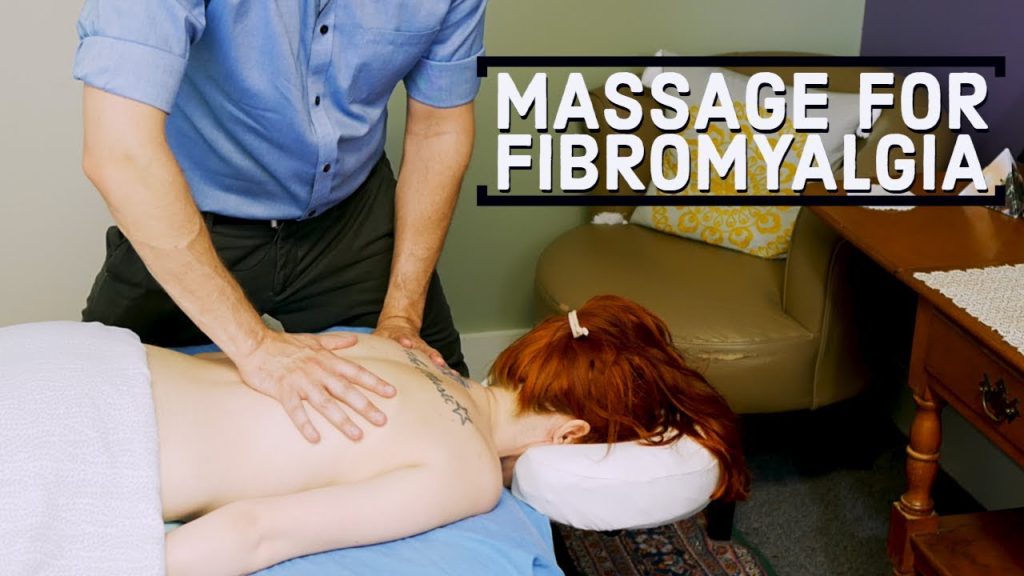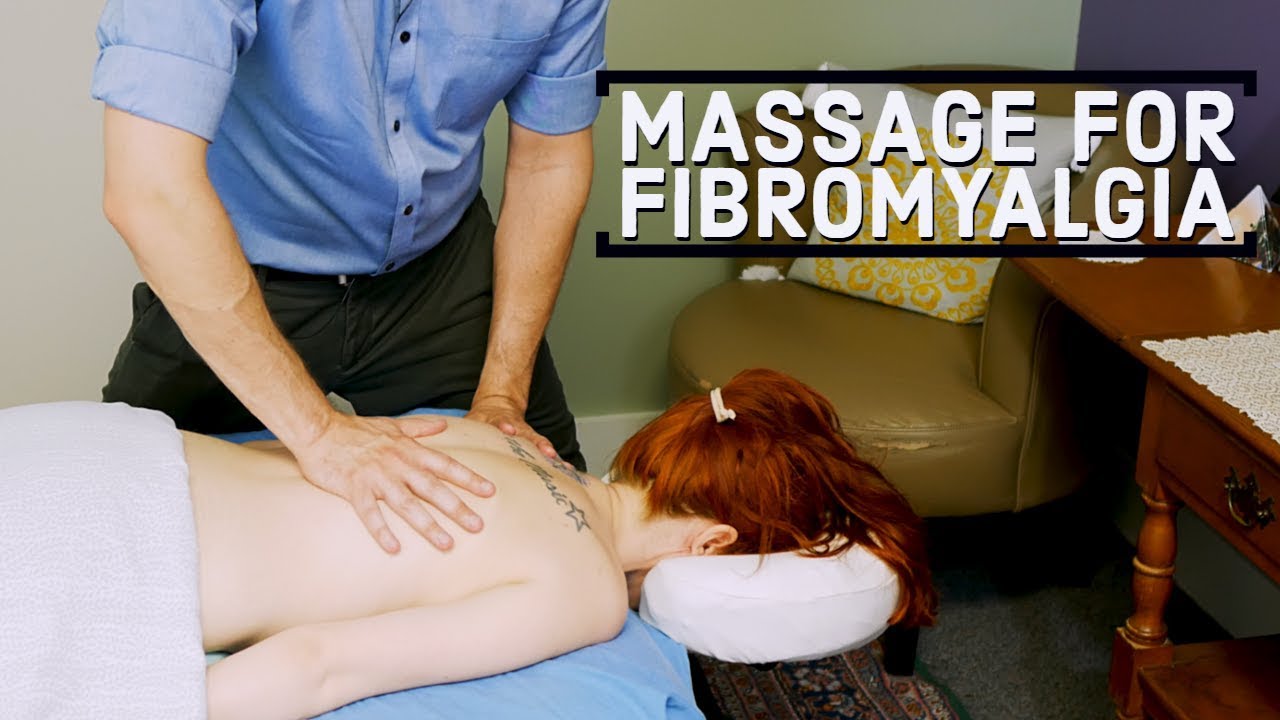If you’re living with fibromyalgia, you know that managing the symptoms can be a daily challenge. From chronic pain to fatigue, finding effective ways to alleviate discomfort is essential. One popular treatment option that many people with fibromyalgia turn to is massage therapy. But with so many different types of massages available, it can be overwhelming to determine which one is the best for your specific needs. In this article, we’ll explore the different types of massage techniques and discuss which one might be the most beneficial for those dealing with fibromyalgia.
Understanding Fibromyalgia
Fibromyalgia is a chronic condition characterized by widespread musculoskeletal pain, fatigue, and tenderness in specific areas of the body. It affects millions of people around the world, with women being more commonly affected than men. The exact cause of fibromyalgia is still unknown, but it is believed to be a combination of genetic, environmental, and psychological factors. Living with fibromyalgia can be challenging, as it can significantly impact one’s quality of life. However, there are various treatment options available to manage the symptoms, and one of them is massage therapy.
Benefits of Massage for Fibromyalgia
Massage therapy has been found to be beneficial for individuals with fibromyalgia, offering relief from pain, improving sleep, and reducing anxiety and depression. When performed by a qualified massage therapist, it can provide much-needed relaxation and comfort, helping to alleviate the symptoms associated with fibromyalgia.
Relief from Pain and Tension
One of the most significant benefits of massage therapy for fibromyalgia is its ability to provide relief from pain and tension. Gentle and targeted pressure applied to the affected areas can help to relax the muscles, reduce inflammation, and improve blood circulation. This can result in a decrease in pain intensity and an increase in overall comfort.
Improved Sleep
Many individuals with fibromyalgia suffer from sleep disturbances, such as insomnia and restless leg syndrome. Regular massage therapy sessions can help promote better sleep by reducing muscle tension, promoting relaxation, and increasing serotonin levels. Serotonin is a neurotransmitter that plays a crucial role in regulating sleep, mood, and pain perception.
Reduced Anxiety and Depression
Living with fibromyalgia can be emotionally challenging, often leading to increased levels of anxiety and depression. Massage therapy has been found to have a positive impact on mental well-being by reducing stress hormones like cortisol and increasing the release of endorphins, which are the body’s natural “feel-good” chemicals. This can result in a decreased feeling of anxiety and depression, improving overall emotional well-being.

This image is property of cdn2.hubspot.net.
Key Considerations for Massage Therapy
While massage therapy can be beneficial for individuals with fibromyalgia, there are several key considerations that should be kept in mind to ensure a safe and effective treatment.
Consultation with a Healthcare Professional
Before starting any massage therapy treatment, it is essential to consult with a healthcare professional, preferably one familiar with fibromyalgia. They can provide guidance and recommendations based on your specific condition and medical history. This is especially important if you have any underlying health conditions or if you are currently taking any medications.
Individualized Treatment Plan
Each individual with fibromyalgia may have different needs and preferences when it comes to massage therapy. It is crucial to work with a qualified massage therapist who can tailor the treatment plan to address your specific symptoms and concerns. Communication is key in ensuring that the massage therapist understands your pain tolerance, preferred techniques, and areas of focus.
Finding a Qualified Massage Therapist
To ensure the best possible outcome, it is essential to find a qualified massage therapist who has experience and expertise in working with individuals with fibromyalgia. Look for therapists who are licensed and certified in massage therapy, and consider seeking recommendations from trusted healthcare professionals or fellow fibromyalgia sufferers. A good massage therapist will listen to your needs, provide a safe and comfortable environment, and adjust the treatment accordingly.
Different Types of Massage for Fibromyalgia
There are several different types of massage that can be beneficial for individuals with fibromyalgia. These include Swedish massage, deep tissue massage, and trigger point therapy. Each type of massage has its own techniques and benefits, making them suitable for different individuals and symptoms.
Swedish Massage
Swedish massage is one of the most popular and widely practiced types of massage. It involves long, flowing strokes, kneading, and circular motions to relieve muscle tension and promote relaxation. Swedish massage is typically gentle and is suitable for individuals with fibromyalgia who may be sensitive to touch.
Deep Tissue Massage
Deep tissue massage is a more intense form of massage that targets the deeper layers of muscle and connective tissue. It uses slower, more forceful strokes and may involve the use of elbows, forearms, or specialized tools to apply pressure. Deep tissue massage can be particularly helpful in reducing chronic muscle pain and stiffness associated with fibromyalgia.
Trigger Point Therapy
Trigger point therapy focuses on releasing tight knots or trigger points in specific muscles. These trigger points can cause referred pain in other areas of the body, contributing to the overall pain experienced in fibromyalgia. By applying direct pressure to these points, trigger point therapy aims to relieve pain and improve mobility.

This image is property of www.medipractic.com.
Swedish Massage for Fibromyalgia
Swedish massage is a gentle and relaxing type of massage that can be particularly beneficial for individuals with fibromyalgia. It utilizes long, flowing strokes, kneading, and circular motions to reduce muscle tension, improve blood circulation, and promote relaxation.
Techniques Used
Swedish massage techniques include effleurage (long, gliding strokes), petrissage (kneading and squeezing), friction (firm circular motions), tapotement (rhythmic tapping), and vibration (gentle shaking or rocking). These techniques are applied with varying pressure levels based on the individual’s preferences and pain tolerance.
Benefits for Fibromyalgia
Swedish massage can provide many benefits for individuals with fibromyalgia. It can help to relieve muscle tension, reduce pain intensity, and improve flexibility. The gentle and rhythmic nature of Swedish massage also promotes relaxation, helping to alleviate stress and anxiety often associated with the condition.
Potential Drawbacks
While Swedish massage is generally safe and well-tolerated, there are some potential drawbacks to consider. Some individuals with fibromyalgia may be extra sensitive to touch, making certain techniques uncomfortable or painful. It is essential to communicate any discomfort or pain to the massage therapist during the session to ensure adjustments can be made.
Deep Tissue Massage for Fibromyalgia
Deep tissue massage is a more intense type of massage that can target the deeper layers of muscle and connective tissue. It is particularly beneficial in reducing chronic muscle pain and stiffness associated with fibromyalgia.
Techniques Used
Deep tissue massage utilizes slower, more forceful strokes and targeted pressure to release tension and knots in the muscles. The massage therapist may use their elbows, forearms, or specialized tools to apply the necessary pressure, working through layers of muscles and connective tissue.
Benefits for Fibromyalgia
Deep tissue massage can provide significant benefits for individuals with fibromyalgia. It helps to break down adhesions in the muscle tissue, increase blood flow, and promote the release of toxins. This can result in reduced pain, improved mobility, and increased overall comfort.
Potential Drawbacks
Due to the deeper pressure and intensity involved, deep tissue massage may not be suitable for everyone with fibromyalgia. Some individuals may find it uncomfortable or painful, especially if they have tender or sensitive areas. It is crucial to communicate your pain tolerance and preferences with the massage therapist to ensure a safe and effective treatment.

This image is property of www.integrativehealthcare.org.
Trigger Point Therapy for Fibromyalgia
Trigger point therapy focuses on releasing tight knots or trigger points in specific muscles that may be contributing to the overall pain experienced in fibromyalgia. By applying direct pressure to these points, trigger point therapy aims to relieve pain and improve mobility.
Techniques Used
Trigger point therapy involves locating and applying pressure to trigger points using the fingers, knuckles, or specialized tools. The pressure is applied until the knots or tight bands of muscle release, providing relief from pain and tension. The massage therapist may also incorporate stretching and deep breathing techniques to enhance the effectiveness of the treatment.
Benefits for Fibromyalgia
Trigger point therapy can be highly beneficial for individuals with fibromyalgia. It can help to reduce localized pain, improve range of motion, and release muscle tension. By targeting the specific trigger points associated with fibromyalgia, this technique can provide targeted relief to areas of significant discomfort.
Potential Drawbacks
While trigger point therapy can be effective, it may not be suitable for everyone with fibromyalgia. Some individuals may find the direct pressure applied to the trigger points uncomfortable or even painful. It is important to communicate your comfort levels and pain tolerance with the massage therapist to ensure a therapeutic yet comfortable treatment.
Other Considerations for Massage Therapy
In addition to the different types of massage available for fibromyalgia, there are several other factors to consider when incorporating massage therapy into your treatment plan.
Frequency and Duration of Massage Sessions
The frequency and duration of massage sessions will vary depending on the individual and their specific needs. Some may find benefit from weekly sessions, while others may prefer less frequent massages. It is essential to discuss with your massage therapist and healthcare professional to determine the most appropriate schedule for your situation.
Combining Massage with Other Therapies
Massage therapy can be an effective standalone treatment for fibromyalgia, but it can also be combined with other therapies for enhanced benefits. Many individuals find that a multidisciplinary approach, including medication, physical therapy, exercise, and counseling, can provide comprehensive symptom management.
Home-Based Self-Massage Techniques
In addition to seeking professional massage therapy, individuals with fibromyalgia can also practice self-massage techniques at home. These techniques include using foam rollers, massage balls, or handheld massagers to target specific areas of pain or tension. However, it is essential to learn proper techniques and exercise caution to avoid exacerbating symptoms.

This image is property of i.ytimg.com.
Choosing the Best Massage for Fibromyalgia
Choosing the best massage for fibromyalgia is a highly individualized process that may require some trial and error. Consider the following factors when selecting the most suitable massage type:
Assessing Personal Preferences and Comfort Levels
Each individual may have different preferences and comfort levels when it comes to massage therapy. Some may prefer gentle and relaxing Swedish massage, while others may benefit more from the deeper pressure of deep tissue massage. Listen to your body and communicate your preferences to the massage therapist.
Considering the Severity of Fibromyalgia Symptoms
The severity of fibromyalgia symptoms can vary from person to person. Some individuals may experience mild symptoms, while others may have more intense pain and stiffness. Consider the severity of your symptoms when determining the most appropriate massage type. For example, deep tissue massage may be more beneficial for those with severe pain and limited mobility.
Trial and Error Approach
Due to the complexity and individuality of fibromyalgia, finding the best massage type may require a trial and error approach. It may take several sessions or trying different techniques to determine which massage type provides the most relief and overall benefit. Be open to experimentation and ongoing communication with the massage therapist.
Exploring Alternative Therapies for Fibromyalgia
In addition to massage therapy, there are several alternative therapies that individuals with fibromyalgia can explore to complement their treatment plan. These therapies include:
Aromatherapy
Aromatherapy involves the use of essential oils to promote relaxation, reduce stress, and alleviate pain. Certain essential oils, such as lavender and chamomile, have been found to have analgesic and calming effects, making them suitable for individuals with fibromyalgia.
Acupuncture
Acupuncture is an ancient Chinese practice that involves the insertion of thin needles into specific points on the body to promote balance and healing. It has been found to be effective in reducing pain and improving overall well-being in individuals with fibromyalgia.
Myofascial Release
Myofascial release is a gentle and sustained pressure technique that targets the fascia, the connective tissue that surrounds and supports the muscles and organs. It aims to release restrictions and improve mobility, offering relief from pain and tension associated with fibromyalgia.
In conclusion, massage therapy can be a valuable addition to the treatment plan for individuals with fibromyalgia. It offers numerous benefits, including pain relief, improved sleep, and reduced anxiety and depression. By understanding the different types of massage available, considering key factors such as personal preferences and symptom severity, and exploring other complementary therapies, individuals can find the best massage type to manage their fibromyalgia symptoms effectively. Remember to consult with healthcare professionals and qualified massage therapists to ensure a safe and individualized treatment plan.

This image is property of painfullyawareblog.files.wordpress.com.
